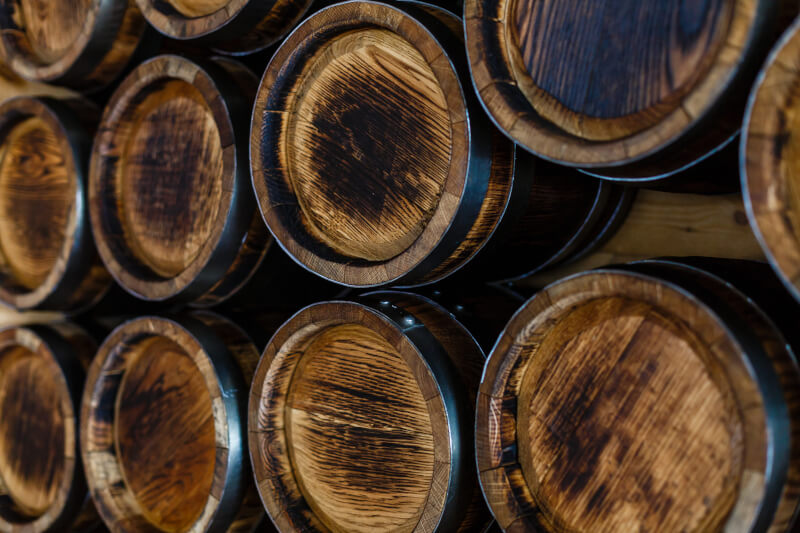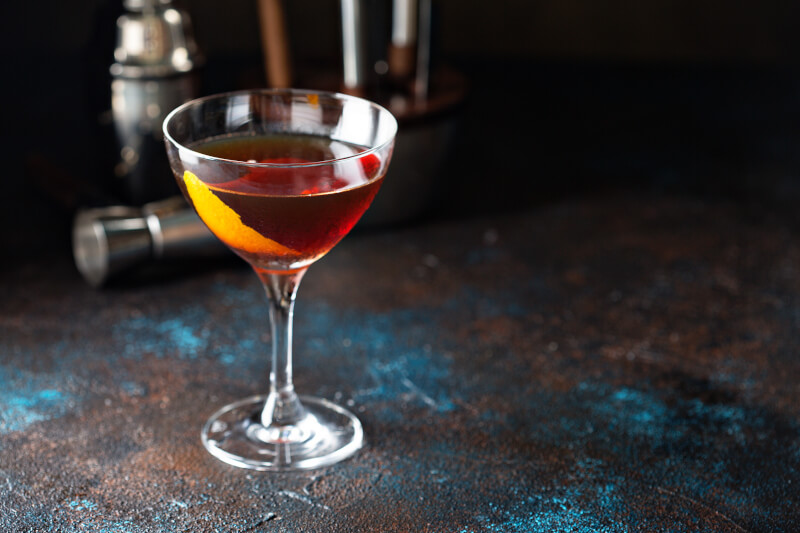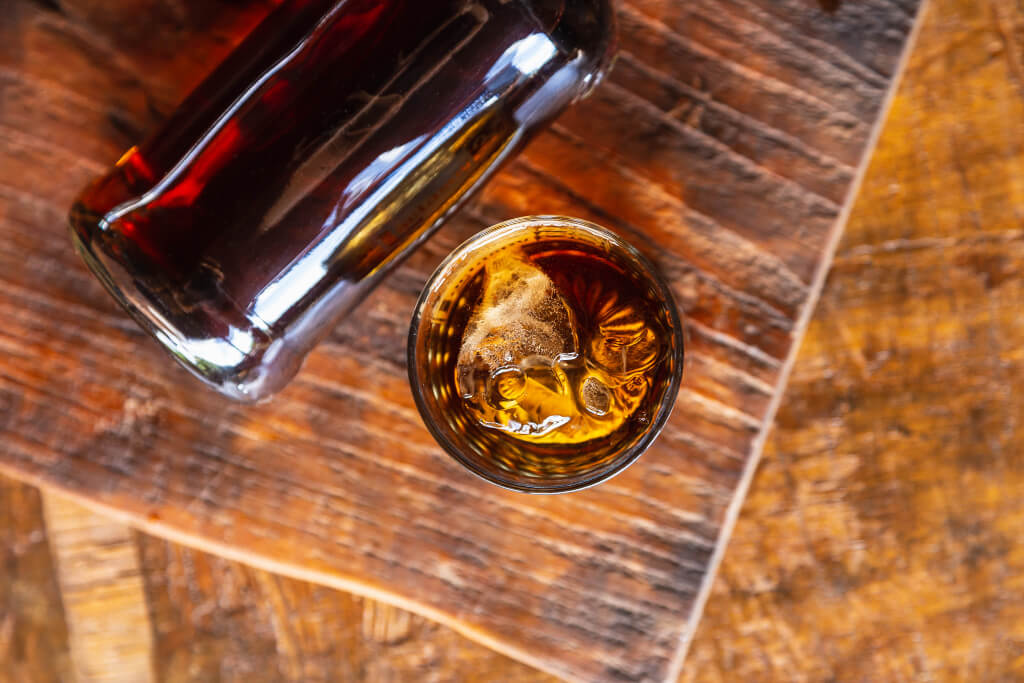You are once again among friends in the whiskey world. This blog series has been dedicated to investigating the wide variety of whiskeys that can be found in the world. Irish whiskey is the subject of the third installment of our World of Whiskey series. In this article, we will go into the origins of Irish whiskey, both single malt and blended.
The most well-known Irish whiskies and some of the most important people in the industry will also be discussed. Finally, we’ll take a glance at how Irish whiskey has fared as an investment.
Irish Whiskey: A Short History
Irish whiskey has a lengthy and convoluted history, with competing narratives concerning its genesis. Christian missionaries in the late fifth century AD are widely credited with introducing whiskey to Ireland. But there are also reports of a drink called “uisce beatha” or “water of life” being prepared in Ireland as early as the seventh century. Rather than the whiskey we know today, this “water of life” was probably more like vodka or aqua vitae.
The 12th century saw the start of industrial whiskey production in Ireland. In 1405, “a great number of barrels of aqua vitae” were exported from Ireland to England, which is the oldest documented reference to Irish whiskey. Irish whiskey was exported all over Europe beginning in the 15th century, and not just to Spain, Portugal, and the Vatican.
King James I of England gave Hugh Redmond, an Irishman, permission to distill whiskey in Drogheda in 1608. The majority of historians agree that this was Ireland’s first legal distillery. There were more than a hundred distilleries in Ireland by the end of the 1700s. Most of them were in Ulster, others were in Leinster, and the rest were in Munster.

Irish whiskey underwent significant development throughout the 18th century. At the St. James’s Gate Brewery in Dublin, where he began his brewing career in 1779. The competition from Guinness led to the closure of numerous smaller distilleries, which had been producing Irish whiskey.
Aeneas Coffey, who invented the Coffey still in 1823, is widely credited with advancing the whiskey industry and paving the way for the creation of blended whiskey. Single malt and grain whiskies are just two of the kinds used to create blended whiskey.
Production of Irish whiskey increased by a factor of 10 between 1800 and 1900, making the nineteenth century a golden period for the spirit. World War One, the Irish War of Independence, and American Prohibition all inflicted severe damage to the industry in the early 20th century. The result was a drop in output, and many distilleries went out of business as a result.
Irish Distillers Ltd. was formed in 1966 when John Jameson & Sons, Cork Distillers, and Bushmills amalgamated to form the company. IDL’s heavy investment in advertising and promotion heralded a new age for Irish whiskey, which boosted sales at home and abroad. Pernod Ricard, a French beverage conglomerate, bought IDL in 1988 and is still the company’s owner today. Since then, there has been somewhat of a rebirth in the production and consumption of Irish whiskey. Sales of Irish whiskey increased by almost 16% in 2018, making it the fastest-growing spirit category worldwide.
Irish Whiskey and Its Many Varieties
Single malt and blended Irish whiskey are the two main categories. Unlike blended whiskey, which is a mixture of malted and unmalted barley, single malt whiskey is created exclusively from malted barley. Blended whiskey is far more common than single malt these days since it is easier and cheaper to create. Single malt Irish whiskies, on the other hand, have been on the rise as customers have gotten more affluent and ready to spend more for superior brands.
Popular Irish Whiskey Labels
Irish whiskey is known worldwide, and some of the most popular labels include Jameson, Bushmills, Redbreast, and Powers.
Jameson
With annual sales of more than €600 million, Jameson is by far the most successful Irish whiskey brand in the world. John Jameson started the company in 1780 in Dublin, and it is now controlled by the French spirits conglomerate Pernod Ricard. Jameson is at least three years old and is a mixture of grain whiskey and Irish pot still whiskey.
Bushmills
Established in 1608, Bushmills is Ireland’s longest continuously running business. Diageo, the company that owns the brand, makes both single malt and blended varieties of whiskey. The Bushmills Original blends grain whiskey and single malt whiskey that has been matured for at least five years to create the brand’s signature product.
Redbreast
Irish Distillers produces Redbreast, a single-pot still whiskey that is aged in a variety of casks, including sherry casks, bourbon barrels, and port pipes. The Irish redbreast Robin inspired the name of this place.
Among the Redbreast offerings, the 12 Year Old is by far the most sought-after by consumers. It’s a single pot still whiskey that’s been matured for at least 12 years and distilled three times.
Powers
Irish Distillers create Powers, a whiskey made in a single pot still. Sherry casks, bourbon barrels, and port pipes are all used in the aging process. The Higher Ups The Powers range’s most well-known expression is the John’s Lane Release. It’s a single pot still whiskey that’s been matured for at least 12 years and distilled three times.
The Return on Your Whiskey Investment
Irish whiskey has been performing better than the rest of the world’s whiskey in recent years. Scotch whiskey sales increased by 470% in 2010 compared to Irish whiskey sales. By 2019, the disparity will have shrunk to 76%, with growth in both asset groups. The main reasons for this expansion are:
- The global rise in demand for Irish whiskey
- The proliferation of high-end Irish whiskey labels
- The category of Irish whiskey is growing and entering new markets.
Sales of Irish whiskey have increased by almost 50% in the past five years, making it the fastest-growing liquor in the world. It is projected that the value of Irish whiskey would increase to $950 million by 2024, from $780 million in 2018.
Livin’ Water
In recent years, sales of Irish whiskey have skyrocketed, not just in Ireland but all around the world. While there are many attractions in Ireland, whiskey is a major lure for many tourists.
Scotland, Here We Come
Scotland is the final stop on our whiskey tour across the world. Scotland, the land of whiskey (or whiskey, if you’re from Ireland), is a beautiful country full of foggy lochs and castles where everyone wears kilts. Scotland is the birthplace of a number of the world’s most well-known whiskey brands, and the industry there has a rich and storied history. Scotch whiskey is the most widely consumed variety of whiskey, and it will be the focus of this piece. We’ll go over its background, manufacturing, and tasting profile, plus suggest a few of our favorite Scotch whiskies.
An Outline of the Development of Scotch Whiskey

The earliest documented evidence of whiskey being made in Scotland dates back to 1494. Early distilleries were often quite modest, turning out only the most essential ingredients. Scotch whiskey wasn’t widely consumed outside of Europe until the 19th century, and exporting didn’t start until the 18th century. Scotch whiskey represents one of Scotland’s most valuable exports today, with more than 90 percent of Scotch sold abroad.
Production Methods
Scotch whiskey is manufactured from water, grains (often barley), and yeast, and it must be distilled in Scotland. It needs to be matured for at least three years in oak barrels after being distilled in pot stills. Scotch whiskey can either be made from a single type of grain or malt or a combination of the two.
Single malt Scotch is whiskey produced at a single distillery using only malted barley and traditional pot stills. Scotch derived from a single distillery’s use of 100% cereal grains is called blended Scotch. Malt extract Single malt whiskies from multiple distilleries are blended to create Scotch. Single grain Scotches from multiple distilleries are combined to make blended grain Scotch.
Scotch whiskey’s flavor is largely determined by the type of cask it was matured in. Whiskey’s flavor depends on several factors, including the type of wood used in the barrel, the capacity of the cask, and the elapsed time since it was first filled. Scotch is often aged in either secondhand bourbon barrels or sherry casks. whiskey aged in former bourbon barrels acquires a sugary, vanilla flavor; whiskey aged in former sherry casks acquires hints of dried fruit and spices.
Single malts are typically sipped neat or with a splash of water to open up the flavor, however, Scotch whiskey can be savored neat, on the rocks, or combined in cocktails.
Scotch Whiskey-producing Regions
Whiskey can be found in the Highlands, Lowlands, Islay, and Speyside of Scotland. Light and flowery in flavor, Highland whiskies are distinguished from their grassier Lowland counterparts. While whiskies from the Speyside region are frequently among the most complicated and full-bodied, those from Islay are prized for their distinctive smoky, peaty flavor.
The Best whiskey From Scotland
The following are examples of well-known Scotch whiskey labels:
Johnnie Walker
Diageo, the company that owns the Johnnie Walker brand, was established in 1820. It sells approximately 200 million bottles per year, making it the most popular Scotch whiskey brand in the world.
Chivas Regal
Diageo also owns another well-known Scotch whiskey label, Chivas Regal. It first opened in 1801 and has become famous for its high-end blends.
Glenfiddich
William Grant & Sons produces Glenfiddich, a single-malt Scotch whiskey. It’s one of the most popular single malt labels, and it’s been around since 1886.
Laphroaig
Beam Suntory distills the single malt Scotch whiskey Laphroaig on the island of Islay. Smoky in flavor from its inception in 1815.
Glenlivet
Pernod Ricard distils its Glenlivet single malt Scotch whiskey in Speyside. One of the most popular brands of single malt whiskey in the world, it has been around since 1824.
Macallan
Edrington distills Macallan, a single malt Scotch whiskey, in the Speyside region. It has been producing high-end blends since its founding in 1824. The Macallan has a high secondary market value.
The Secondary Market for Scotch Whiskey
The secondary market for Scotch whiskey is thriving, as one might anticipate from such high-end and well-known brands.
Several things play a role in this: The increasing popularity of Scotch whiskey around the world, the scarcity of some expressions, and the fact that many bottles are launched as collector’s goods all contribute to the drink’s rising value.
The Macallan “M” Decanter, which had a 500-bottle run and is now highly sought on the secondary market, was introduced in 2014. Collectors clamor for this bottle because of its one-of-a-kind style and scarcity.
The Dalmore 62, a whiskey introduced in 2002 with only 12 bottles made, is another. The whiskey’s age and rarity drive up its price.
Scotch whiskey’s rising profile has resulted in increased interest in collectible bottles. The result is higher secondary market prices for these whiskies. The fact that the Rare Whiskey Icon 100 Index has risen by more than 400% since 2012 is evidence that purchasing rare whiskey is a wise financial move for collectors.
Whiskey of the Highest Quality
Scotch whiskey is widely regarded as the finest whiskey produced anywhere in the world. This is because Scotch whiskey is among the best in the world and because the Scots have centuries of experience distilling whiskey. The Scotch whiskey industry represents an area that investors and consumers alike would do well to keep an eye on. Possibilities for investors to profit from the increasing appetite for Scotch whiskey around the world are expanding. Scotch whiskey is booming, and there are several ways to cash in on this trend, from investing in a distillery to splurging on a rare bottle for your collection.

